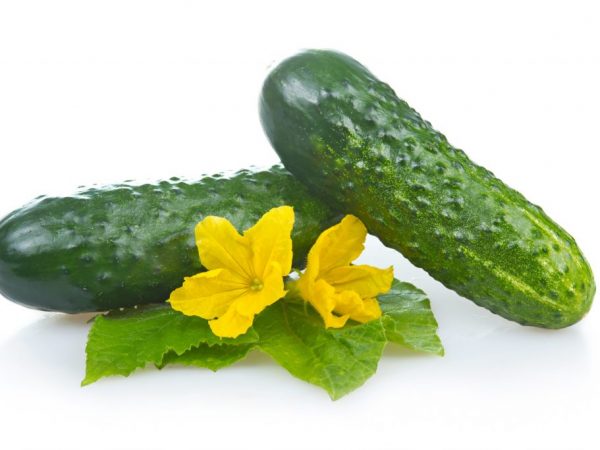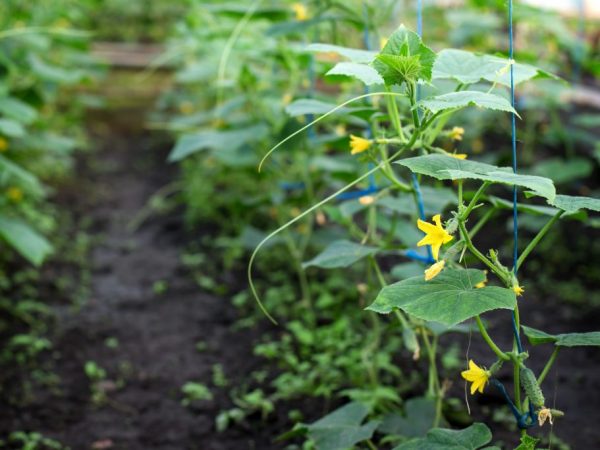Description of the variety of cucumbers Monisia
Despite the high water content, cucumbers are popular not only in summer, but also in winter. Specialists in the field of breeding try to breed several dozen varieties every year. One of the best types of this vegetable crop is considered to be the f1 category Monisia cucumber.

Description of the variety of cucumbers Monisia
general information
The development of the breeding of the Monisia variety of category f1 was carried out by a company from the Netherlands, Sinjenta. It is she who is engaged in the supply of seed material. It is important to note the fact that 2005 is considered the year of breeding of the variety. But in 2007 Monisia f1 got her place in the State Register of the Russian Federation.
This variety of cucumbers can be grown both in open ground and in a greenhouse.
The yield is quite high and amounts to about 250 kg per hectare.
Plant appearance
The bush of this variety is highly developed and has a powerful root system. Average leafiness. Foliage is presented in a dark saturated shade of green and a slight roughness on the surface. There are also small bumps on the leaves, which play the role of attracting bees.
This variety belongs to bee-pollinated varieties, so it is best to grow it outdoors. The flowering type is predominantly female. But, there may be some who have a masculine flowering.
The main stem is not limited in its growth and can reach a height of 2 m. There is a small distance between the nodes. In each node, about 5 cucumbers can be formed.
Fetal appearance
Cucumbers of this variety are cylindrical. The rind is dark green with small stripes of white. Also, this cucumber may have a small amount of spots. The surface is completely filled with a white edging, where the minimum number of tubercles is located.
Cucumbers are characterized by an average weight of 75 grams, but the length of an individual fruit is about 8 cm. The description indicates the versatility of this variety. It can be used not only for making salads or preserving. According to gardeners, it is in canned or pickled form that all the taste qualities of the fruit are revealed. Many people consume it fresh. There is a sweetish taste, without bitterness. Moreover, the lack of bitterness is due to genetic parameters.
Growing features
The preparation was carried out by the manufacturing company. The cultivation of this variety of cucumber must be carried out in open field conditions. But, seeds for seedlings can be planted in a greenhouse so that seedlings appear much faster. Moreover, in conditions of increased heat, seeds will germinate in a safer way. Planting cucumber seeds should be carried out in early May. Cucumber seeds should not be treated with growth stimulants or disinfectants.After 40-45 days, when several pairs of leaves are formed on the stem, the seedlings can be moved to the place of permanent growth.
It is important to choose only nutrient soil with a low level of acid-base balance, because an increased level of acid can negatively affect the root system. The holes for planting seedlings must be formed at a distance of 50-60 cm from each other, but the distance between the rows should be about 40 cm.
Care requirements

Plant care won't be a hassle
Despite the high rates of germination and productivity, this species does not require special care. All care procedures are standard:
- timely watering (2 times a month);
- high-quality feeding;
- loosening the soil;
- removal of weeds and other foreign matter from the soil
Some experts note the obligatory formation of a bush in 1 stem, but everyone carries out this procedure at their own discretion, depending on the development of the plant. If somehow the plant began to be abundantly covered with lateral shoots, then it is simply necessary to form a bush into 1 stem. If the number of side shoots is at an average level, then you can skip the formation of the bush.
Watering should be carried out with water at room temperature, because cool water can negatively affect the development of the root system, which will lead to a decrease in yield. Loosening of the soil and removal of weeds should be carried out 3 days after each watering. It is very important that the root system remains unloaded and receives the required amount of nutrients. Top dressing should consist of mineral and organic substances. It is advisable to use humus or peat compounds as organic matter, but phosphorus and potassium compounds should be preferred as minerals. They will help to reveal all the taste and will have a positive effect on the formation of the bush.
Parasites and diseases
This plant hybrid is completely protected from diseases such as powdery mildew, brown spot and cucumber mosaic, so all preventive measures in the fight against these diseases can be skipped. The problem with this species is that it can be susceptible to parasites such as the Colorado potato beetle, aphids or slugs.
To get rid of bugs, you should use Regent or Confidor. Manganese solution will help in the fight against aphids, but you can get rid of slugs with a solution of hot pepper.
Conclusion
As you can see, planting and caring for this species is pretty simple. Therefore, this variety can be grown even by beginners in the field of agriculture.


